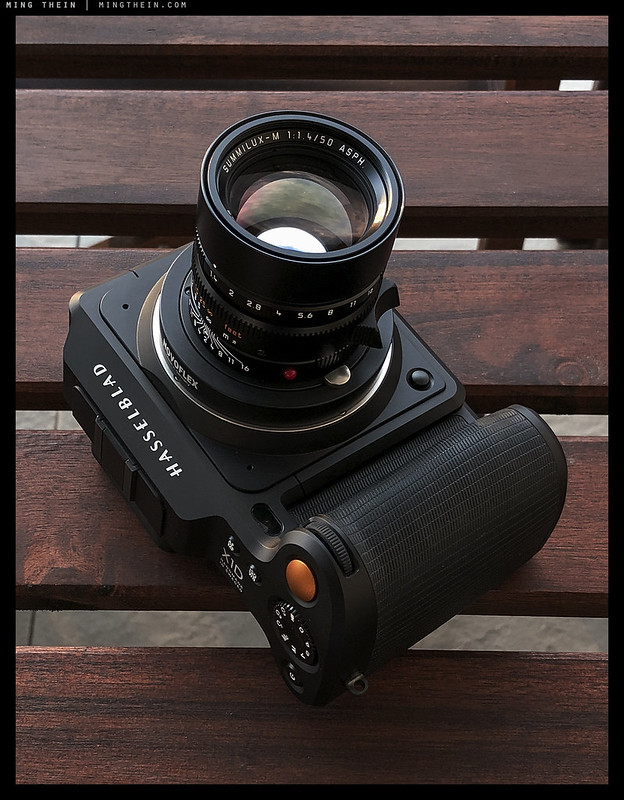
f1.4, medium format, comparable size and weight to ‘pro’ M4/3. What’s not to like, other than the price?
For the last couple of weeks, I’ve been shooting with the rather unorthodox combination seen above. I’ve found it answers two questions/ solves two problems for me: firstly, the desire for something that operates in the way you want (i.e. transparently) and that makes you want to shoot with it; and secondly, the small/light question. (There’s also a whole separate discussion on the concept of practical equivalence and envelope that I’ll discuss at some later point). But the journey getting here wasn’t quite so straightforward, unfortunately, and this combination is not a Swiss Army knife – it’s got some pretty big limitations. But when it delivers, I find that it delivers something quite special by the truckload.
Additional X1D coverage is here: long term review; assessment with Nikon F mount lenses; field use in Iceland.
First limitation: electronic shutter only, since the lenses have no mechanical shutter and nor does the body. This means you need to be careful with any potentially flickering light source, keeping your shutter speed to multiples of 1/frequency or risk banding. More importantly, the sensor’s readout time is fixed at 1/3s – even if your individual line exposure time is 1/10,000s, it takes 1/3s to read from top to bottom. Rolling shutter, beware. It’s not just moving objects; hold the camera stead else verticals may wiggle. There is also no calibration data above ISO 3200 for various technical reasons, so this is your maximum speed – but you can always underexpose and push in post.

Gymnastic fan. Rolling shutter can be creatively interesting…sometimes.
Second limitation: there are only two adaptors available currently; the Kipon and (soon) the Novoflex. The Kipon I had did not allow focus to infinity with any lens; I sent it back to the factory who examined it and claimed it was within spec, and elected to refund my money instead of providing me with one that actually worked – read into that what you will; you may have better luck than I. The Novoflex I have is spot on: the infinity setting on every lens tested corresponds with infinity in reality.
Third limitation: here’s the big one; lens selection. Remember first that we are trying to make two things work together that were never designed to in the first place. It is a bonus that they work at all. The whole question of optical compatibility and synergy is a complex one as with digital cameras, it now involves the sensor color filter array and microlens design; this is why for instance lenses that may be great on FF look terrible on M4/3, and Leica lenses do better with Leica bodies. Peculiarities include: M4/3 has a very thick (5mm+) filter pack; this causes all sorts of havoc with lenses that are even slightly non-telecentric. Leica M sensors have a progressively offset microlens array to deal with the extreme angles of incidence in the corners. And the filter pack and micro lenses on the GFX and X1D aren’t the same – even though the sensor is. And that’s just the beginning, of course.
In general, longer lenses work better; we’re talking 50mm and above. This has to do with both geometric limitations of angles of incidence and exit, pupil size, and the fact that less correction is required. That said, not all long lenses work well – there are some 50mms that will still vignette. A hard (i.e. mechanically limited) vignette is not correctable in post; a soft (just darkening) one is. But in any case, even if a lens is only designed for 36x24mm coverage – this requires approximately a 43mm image circle. Here’s the thing: you could use any aspect ratio that fits within that image circle, and still get coverage beyond what a FF sensor would give; for example, a 31x31mm square. This, of course is a fallback plan: we would prefer to use the whole sensor. The final consideration has to do with optical design. Normal to short tele lenses tend to be symmetric Gauss-types or derivatives; such designs are simpler to compute and make, and tend to have decent performance. They also tend to have larger coverage. Telephotos are usually entrance pupil-limited and also tend to have larger coverage. Wides and wide normals are the mixed bag: symmetric designs are best for performance and simplicity, but require very short flange distances (the shorter the focal length, the shorter the flange distance) and have extreme ray angles. The extreme exit angles do not play nicely with most sensors – you land up with severe shading due to pixel depth, and worse, purple fringing effects due to refraction off the micro lenses – which is one reason most modern ‘digital’ designs are telecentric. (Lens designers also now have no problem computing these since software has taken over the hard math). Telecentric lenses are great for resolving power, chromatic correction and even illumination – but coverage is exit-pupil limited, and almost never beyond the required diameter.
My investigations yield the following, at infinity (close up is not a problem as your are magnifying the projected image circle: if a lens covers the sensor at infinity, it will also do so close up). Please note that this is not an exhaustive list; I’ve only been able to lenses I have access to.
- For wide lenses, the telecentric (e.g. Distagon) types simply do not provide adequate coverage of 44x33mm without hard uncorrectable corner vignetting, at any aperture.
- For wide lenses, the symmetric (e.g. Biogon) types will cover providing there isn’t a mechanical limitation, but you will likely see strange lateral color shifts in the periphery of the frame due to extreme ray angles and interference with the microlenses on the sensor.
- Compact lenses are typically physically limited due to size, and again do not provide adequate coverage without hard uncorrectable corner vignetting at any aperture.
- Lenses that do not provide adequate coverage
- Zeiss: ZM 2.8/21, 2.8/28, 2.8/35, 1.4/35, 2/50
- Leica: 24/1.4 ASPH, 28/2.8 ASPH, 35/2.4 Summarit, 35/1.4 Summilux II, 50/2.4 Summarit, 50/2 Summicron (latest), 50/0.95 ASPH
- Voigtlander: 21/4, 28/2, 35/1.4, 35/1.7 (but with L-R color shifts), 40/1.4, 50/1.1
- Lenses that provide adequate coverage (all will have some soft vignetting)
- Zeiss: ZM 2/35, 1.5/50
- Leica: 50/1.4 ASPH, 75/2 APO ASPH, 90/2 APO ASPH
- Voigtlander: 50/1.7, 75/1.8
- Lenses that provide adequate coverage but must be used with caution (see individual notes)
- Voigtlander: 35/1.2 II – extreme field curvature or edge pupil mechanical constriction means there’s a lot more DOF at the edges than the centre, e.g. at f1.2, central subject at 3m is in focus, immediate background clearly defocused; edges at 5-10m almost in focus (you can see the rays are not converging properly, though).
I personally settled on the Leica 50/1.4 ASPH – not the cheapest option, but the one from this group that had the best balance of rendering quality, resolution, edge performance, size, speed, tactile, desired angle of view, minimum focusing distance, haptic feel etc – it’s not the best in any one category, but it scores very highly across the board. It is a compact social-friendly camera with the right tactile qualities, unique rendition – ranging from wall-of-bokeh-cinematic at f1.4 and close up, to razor sharp cross frame at f8 and infinity – and monstrous low light capability when combined with the X1D’s sensor and zero-vibration shutter. I find myself fiddling with it and experimenting – a lot. Which is really what photography is about, isn’t it? MT
The Hasselblad X1D is available here at B&H
The Leica 50/1.4 ASPH-M is available here at B&H and Amazon
And the Novoflex adaptors will be available soon from Novoflex…
__________________
More info on Hasselblad cameras and lenses can be found here.
__________________
Visit the Teaching Store to up your photographic game – including workshop videos, and the individual Email School of Photography. You can also support the site by purchasing from B&H and Amazon – thanks!
We are also on Facebook and there is a curated reader Flickr pool.
Images and content copyright Ming Thein | mingthein.com 2012 onwards unless otherwise stated. All rights reserved
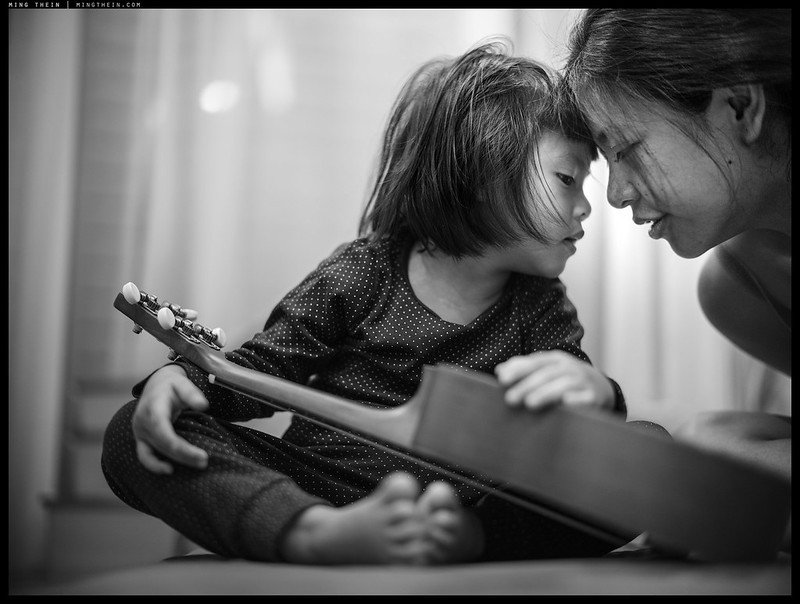

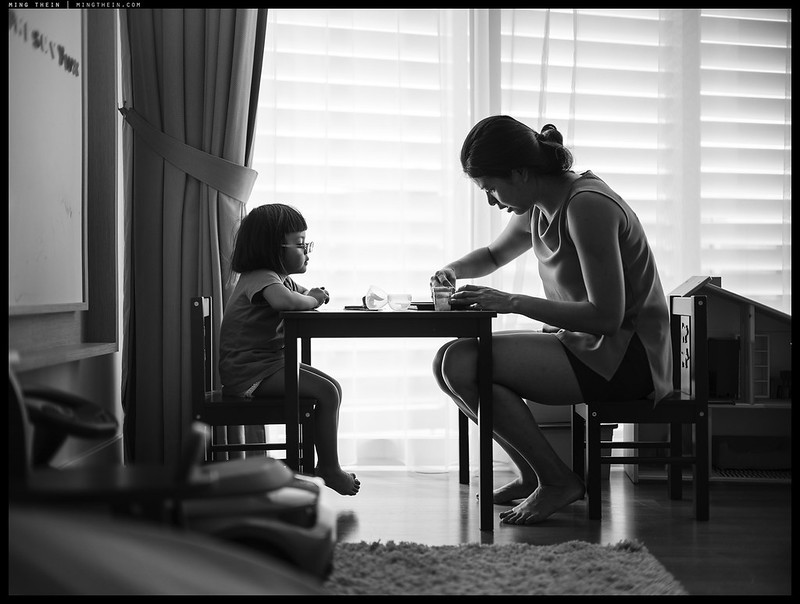
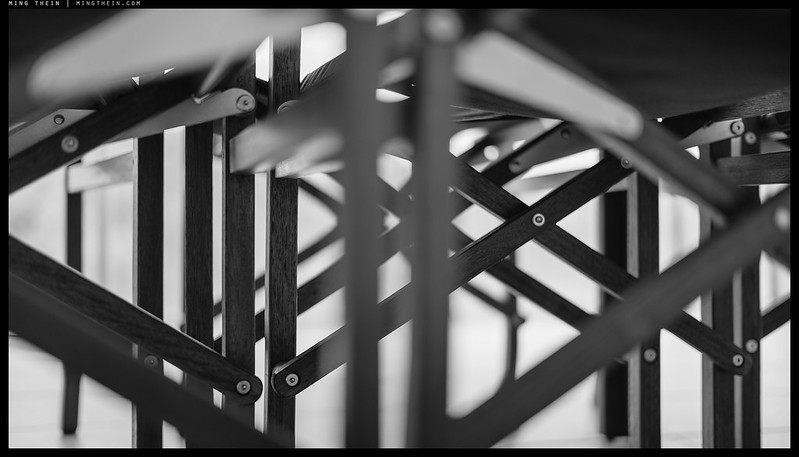
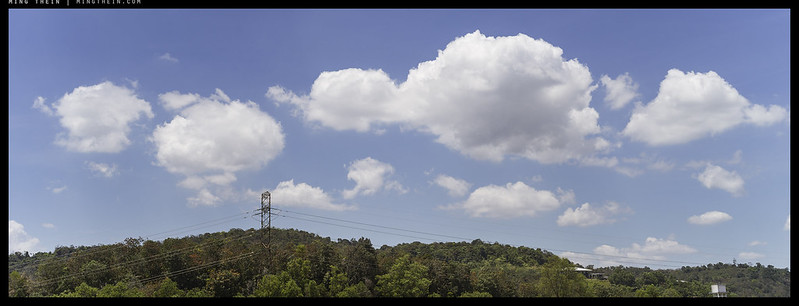
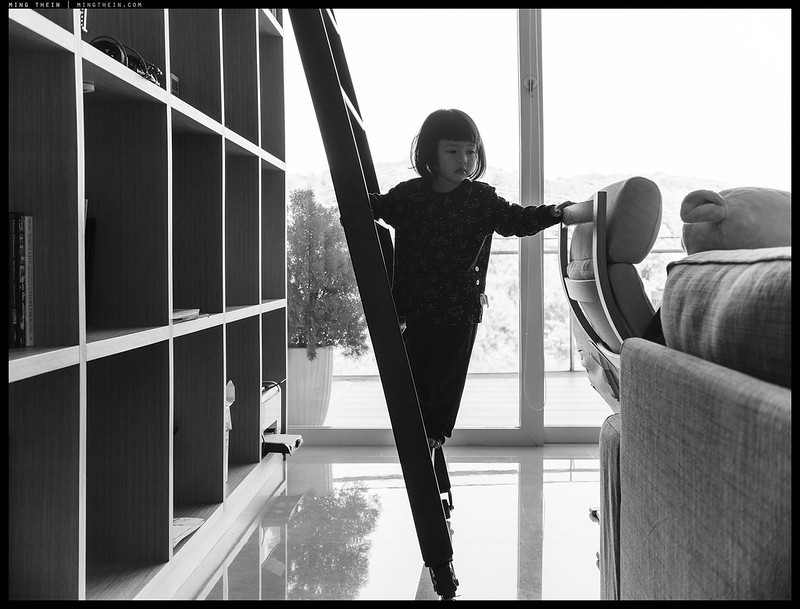





What if I get X1D II and use mainly on Leica glass to do street photography, would it sound reasonable for you and is it worth it despite many limitation flaw system doesn’t have mechanical shutter (Banding isn’t issue since I’m used with silent shutter mode Sony system)
It’s workable; I’ve done it. Worth/ value depends on ones personal circumstances. There are cheaper ways to do what you want.
By your experience using an adapter (I’m getting Fotodiox on the way) what would a135 focal lengths would translate to medium format? For example a 50 Summilux on Hassy = ??mm or 75mm APO on X1D = ??mm
Approximately divide by 1.25.
I got X1D II and I gotta say, it’s quite a challenge to get a shot with E-curtain and stay still in 1 spot, if I even shake the image will be distorted but the result quite satisfy when I achieve the shot.
I just got my X1D II and was excited to start shooting with my Leica lenses but oh boy, the readout time when using the electronic shutter is so slow that it is very difficult to handhold any shot since you most likely will get horizontal movement no matter the shutter speed. I am looking forward to my 45mm Hasselblad lens because this setup doesn’t work for me, because it isn’t just a matter of me having to be still but also my subject not moving. But thank you for the blogpost. It was very informative and beautiful pictures btw!!
It’s 0.3s. Perfectly fine on a tripod, but requires steady hands and shorter focal lengths for handheld use.
Hi Ming, great article and photos. If you were to compare the XCD 90 and the Leica Apo 90 on the X1D, what would be the main difference in terms of image quality and rendering? Preference for one or the other? Appreciate your thoughts.
I’ve only tried the 90 APO briefly, but my impressions are outright shaprness/ resolution are similar, with the 90 APO perhaps having a bit more bite and a touch less longitudinal CA; that said CA on the XCD 90 is already very low – it’s one of the best lenses in the system.
Thanks for that – now considering both 🙂
Hello.
March 2018, and the ‘Blad prices have dropped, and since I have the ZM 35 / 2 and the Leica 50mm /1.4, both for my M240, I think it’s time to make the plunge.
Can you possibly explain the issue No1 for me about the shutter speeds 1/frequency you mentioned or point me to where this info might be available?
What’s the likely max flash sync’ speed with these two lenses I wonder? Am I correct in saying third party triggers of the Nikon variety will likely work with the ‘Bald, they do with the Leica BTW.
Many thanks.
Shutter speeds: 1/frequency is for a) handholding without camera shake, but note that the rolling shutter operates at 1/3s so you need to be a bit more still than usual to avoid rolling shutter distortion; b) 1/multiples of electrical frequency (i.e. 1/50, 1/100 etc or 1/60, 1/125 etc) to avoid banding under LED or fluorescent sources.
There is no sync speed at all as the sensor uses a rolling electronic shutter (scans line by line) not a global one (reads all line at once) – flash does not work in this configuration unless it’s a long exposure and manually triggered.
Ming I said it a while ago when I picked up one of your Frankie Falcon bags but I’m finally placing my X1D order and I’m also including a 50mm 1.4 ASPH in Silver to match the X1D. I figure I’ll use it for a period of time until the 80 1.9 XCD comes out weighing the pros/cons of each. Thankfully Leica gear doesn’t really drop in value 😉
I’m so excited to dive into this camera and discover all that it can do!
Great! Much appreciated if you can use one of my referral links too 🙂
Hi Ming, thanks for the article and the beautiful shots. I’ve been shooting a 50 F1.4 summi on a Fuji GFX with good results. I’ve heard that the Tri-Elmar 28 35 50 has a large image circle but can’t find any info on it. Have you experimented with a Tri-Elmar 28 35 50 on the Hassie or have any insight on it’s chances of success on the mini medium format sensor?
Actually, yes – I tried one briefly. 28 is no go with hard vignetting and edge issues. 35 is borderline, 50 is okay. Not worth the premium you’d have to pay for what is essentially a 35-50 f4, in my opinion.
Hi there, great article, thank you. I was curious if the focus peaking works when manual focusing with a Leica M lens? New X1D user with the same 50mm M lens…
It won’t auto-trigger as the camera has no way to know when you’re turning the focusing ring. I usually use magnification or focus bracketing if I’m working fast.
I just have to say….I am that user! Article just for me! ha
it is a pretty wonderful combo. Trick is its still my favorite lens for my M…..
Thank you for this article! I read this and found myself inspired to try some of the Leica “R” series of lenses with my X1D. I only have a handful in my collection, but so far, the 80mm Summilux-R (my copy dates to around 1986) is producing some of the most phenomenal results. I highly recommend this combo if you can ever find one to borrow and test out. Its a little heavy on the camera but not too unbalanced for frequent use. I got OK (but very artistic) results with an older Summicron-R 50mm. The 100mm Macro Elmarit-R f2.8 looks very promising too and it seems to sit on the camera quite nicely.
Thanks for the tips. Do all of these cover the full 44×33 sensor area?
Yes, they do. The stand-out is the Summilux 80mm f1.4. Depending on your aperture you can get sharpness in the corners and it looks almost like the 80mm was made for medium format digital. Vignetting is minimal to non-existent. The color is really weird straight off the raw files. But, with minimal after processing it is producing some good color, but outstanding and quite professional looking monochromatic images with impressive degrees of micro-contrast. I do use the original Monochrom-M and this X1D sensor/Leica R lens combo is producing monochromatic images that easily rival or surpass it.
The100mm App-Macro-Elmarit-R f2.8 covers as well or better than the Summilux. The X1D is going to make this lens much more interesting than any other digital back I have tried to adapt it to. The colors are coming off this lens in a more natural look and not the greenish-supersaturated look of the 80mm f1.4. So there is the potential to save time with less need for after processing. The 200mm f4 Apo-Telyt-R was a pleasant surprise. This is a heavy lens, but its still fairly easy to handhold or use a monopod with. It provides full coverage and no vignetting and shoots very well wide open.
So far, rolling shutter is sometimes an issue for me. I think with more practice I can figure out what ISO/shutter combinations work, and what does not work so I can avoid the problem. I see this more of as a handheld camera. Its has a very nice feel and weight to it. Do you think the electronic shutter feature will get updates from time to time and that we will see it get faster?
Thanks – useful information! Surprising the 80 has a color shift; the only thing I can think of is non-telecentricty causing interference with micro lenses on the sensor. This would manifest as peripheral color shift only, not across the whole fram.e
Rolling shutter will always be an issue with moving subjects. It’s an issue with phased indoor lighting, but if you go in multiples of 1/50 (i.e. 1/50, 1/100, 1/200) or 1/60 (depending on which country you live in, and the power phasing) – the striping goes away as you’re shooting in phase with the lighting.
I forgot to mention the more compact early 80s 50mm Summicron-R f 2. It does provide full coverage, however there is vignetting at the very extremes f2 and f22 on the aperture settings. Its usable. I just don’t as much like the angle of view it is providing on this larger sensor and its not as sharp as I would like. I would almost always pick up the 80mm instead of that less effective 50 unless I wanted to do something very specific and needed the extra softness of that lens. One of the later, larger Summilux-R or Summicron 50mm R would work well. There is a very large late issue copy of the Summilux-R 50mm with ROM contacts that takes 60mm filters that is supposed to be some kind of superstar legacy lens. I bet that lens would be the one to try with this camera.
Not sure you’d like the AOV on any of the other 50s – it doesn’t change 🙂
Ming, very nice article. I have an X1d and software update needed to address the following: AFLock should operate without having to keep the button depressed…one push locks the focus until shutter released…….also provision to use the AFLock button as a “back focus” button with shutter button disengaged from Auto Focus. best, Martyn
We avoided ‘push to lock push to unlock’ as it’s possible to have the camera set up in a way that’s unexpected. As for AFL being back focus – the AFD button already does this (acting as AF-ON) when you’re in MF mode. 🙂
Hi Ming,
I am contemplating getting the X1D now that the price is more within my reach. I used to shoot with the V system and kept the 110mm f2 lens. Which one lens will you recommend for street and landscape photography?
A somewhat impossible question, I’m afraid. You can use pretty much any lens for anything depending on how you compose…personally, my style suits the 90 best, but there are also situations that do well with the others…
Thank you for your speedy answer. I was thinking since I can adapt my 110mm f2 V lens. Maybe I can get the 45mm for AF and it’s smaller than the 90mm too.. I use the 35mm for my Leica M the most. What do you think? A reasonable choice?
So long as the limitations of electronic shutter are okay, you can adapt the 2/110 – but note that you will have rolling shutter on moving subjects as readout time is 0.3s (line by line readout, not global) regardless of the individual exposure time per line.
Hello Ming, thank you for the review and advise. But I still wonder if you have any sample image about the leica 28/2 and 50/2 on X1D. Thank you.!
No, I didn’t shoot with any of those beyond checking the image circle (and I never publish test images like that.)
Thank you for your blog and it has help a lot for selecting a “Right” M lens on X1D. I am using a 35mm F1.4 ASPH for my M camera, so will select a 75mm to work for both the M and X1D. Lots of comment mentioned 75mm F1.4 ASPH summilux works great on M camera but no information about this on X1d. Since both 50mm F1.4 ASPH and 75mm F2.0 APO work fine on X1D, can I assumed the 75mm F1.4 ASPH summilux can also works on X1D with no black circle but only soft vignetting? Thanks for your advise.
I think you mean the 75/2 ASPH; the 75/1.4 is an older non-ASPH and quite rare (and therefore difficult to test). I think it would be potentially a very expensive assumption to make…
Oh yes, thank you for your clarification, it is a Leica 75mm Summilux-M f/1.4 and not a ASPH lens. Will wait & see, can’t afford to buy an expensive but not work as expected lens.
Thank you.
One of my very lenses in what is a gorgeous looking combination. The cross-over to Medium Format has sparked a question: what do you think is the resolution limits of Leica’s modern ASPH lenses? The M and SL will no doubt receive pixel upgrades in the future, but how far can they go until the M lenses cannot resolve any further? 50MP?
*One of my lenses
*One of my favourite lenses
They seem to be doing just fine on the X1D, but pixel density is lower than even the current 24MP FF sensor they’re using. I honestly have no idea as I don’t have enough experience with that system; but if they can resolve fine on the 24MP APSC cameras, that’s north of 50MP FF. Of course it tells you nothing about the corners…
Thanks a lot for the article. Wondering if the Contax 35 will still provide some shift when mounted through the Novoflex or Fotodiox adapters. Have you been able to try this combination? I remember that you had and liked the lens (and it will give you the bonus of a 28mm FOV on the X1D).
So far I am enjoying the X1D very much. Very few things to be desired for my use and I am nitpicking:
— The option for a more usual digital level that doesn’t force your eye to jump from bottom to side. Leica Q’s one is great for me, very easy to use handheld
— Simultaneous red focus marks + magnification
— Auto iso in manual mode
— The LCD screen stays off if set that way
Thanks for the work you put into the site.
You might get a bit, but as far as I know there’s no CY to X adaptor yet.
Noted on the other suggestions, will pass along.
May I know what is the focal length for Leica 90mm APO and 75mm APO lens on X1D? Will it be 71mm and 59mm ? Any black circle around the edge or just soft vignetting on the edge of photos if using these 2 lens on X1D? I am going to select one of these and will you please advise which one (Leica 90mm APO or 75mm APO) is better on X1D? Thanks.
It’s more like 72 and 60mm diagonal, but the aspect ratios are not the same so it’s hard to give an exact number. No black circles on either – just minor soft vignetting. Both are optically fine, your preference for focal length.
Just to share my experiences with M lens on X1D. I’ve tested the WATE, 28 Summilux, 50 APO, 90 Cron and Voigtlander 35 f2.5 in 3×2 aspect ration (not FoF crop) using a fotodiox adapter. The WATE works well at 21, though has visible pincushion distortion (can be corrected by loading the WATE lens profile in LR). The 28 doesn’t work, hard vignette. 50 APO does work w soft vignette but there is visible smearing in the corners. The 90 works perfectly w very slight soft vignette. Finally, the diminutive Voigt 35 is the big surprise here. It works perfectly and is plenty sharp throughout the image frame!
BTW in my estimation, the effective crop factor on a 3×2 mf crop vs ff is around 0.857x.
Interesting – do you see any color shift/ smearing towards the edges with the Voig 35/2.5? It’s faster (1.2, 1.4, 1.7) cousins do not fare well at all.
Crop factor is somewhat academic as you can really only compare diagonal angle of view. It seems rather wasteful to throw away a good portion of the sensor…
Upon further testing, unfortunately there is magenta color shit towards the edges (not as bad as was on my M240), but sharpness holds up well. Perhaps best reserved for b&w or less color critical shots. As for aspect ratio, I’ve sort of settle on 3:2 as my main compositional aspect ratio…though I do very much admire your wonderful photos with the full X1D sensor!
A side question, I’m having difficulty charging the X1D via USB-C. Is there any requirements for power output from the charger? So far I’ve tried chargers with output of 5V 1.0A, 2.0A, both don’t work, and the one that finally showed the charging icon (next to battery icon) on the camera was 5V 1.5A.
I’ve recently found the Ricoh LTM GR 28/2.8 to provide full coverage (and sharp corners at f8) but horrible color shifts: however, on converting to monochrome – the tones are incredible. I can see a use for this kind of lens…
I tend to flop between full 44×33 and 2.65:1 (XPAN) – no idea why; perhaps the cinematicness of it…
The X1D was not designed to charge over USB. It will power but not charge the battery – there is no circuitry for that.
Hi Ming,
I very much like you site. Your thoughts are always interesting and your images always inspire.
I have a couple of questions on your trial of the 0.95 Noctilux with the X1d:
One is, would the vignetting be acceptable or better if the images are cropped square – using the most central portion of the lens and reducing the image diagonal?
The other is, I wonder if you have a number for the image circle diameter on the 0.95 – (I have looked around on the web without luck)?
Many thanks,
Gavin
Best guess is that it’s about 50mm or so – the outer 7mm have a hard vignette, and there’s a soft vignette that extends even further in – so effective aperture is 0.95 only in the very centre. Square is just about okay, but the purple fringing is not really acceptable at any aperture. Too much money to deliberately go out and spend on something that doesn’t really work well (not surprising given it was never intended to) however if you already have one, why not? 🙂
Thanks for your thoughts – it is a moment of overlap – so, perhaps I’ll give it a try… the ‘why not’ principle is strong in me!
An update to your Second Limitation: There is now also a FotodioX adapter available in addition to the Kipon and the Novoflex.
I enjoy my 75mm APO Summicron. Very similar design to the 50mm Lux and balances well with the X1d. One stop slower but really with the electronic shutter being so slow it doesn’t matter; FOV @ f/2 similar to 50mm @ f/1.4. My copy has wonderful mojo. I’d like to try a 135mm APO.
I recall an interview with Peter Karbe (the designer) where he mentioned the 50/1.4 ASPH and 75/2 APO ASPH are actually related optical designs…
To help with using adapted lenses, assuming Hasselblad endorses / supports such use cases, it would if some firmware support was added, such as:
1) Create a menu for storing lens presets so the EXIF is populated.
2) Each preset would include (all fields populated by the end user):
– name of lens, such as Leica 50mm F1.4 Summilux-M ASPH
– focal length & focal length in 44x33mm terms (it would be 35mm x .8)
– max aperture
3) Additional crop tags (3FR tags) added to the camera, such as 36x24mm
This data is helpful for the camera as well, particularly the focal length – that’s a required input for auto-ISO. Another thing Hasselblad could consider is adding a ROM chip to their own adapters – such as the XPAN and presumably a V adapter. The ROM chip could added features such as:
1) Auto-enable electronic shutter
2) Auto trigger a menu so they cold select the mounted Hass lens via a drop down list
3) Once lens is selected, now metadata can be push to EXIF, etc.
4) 3FR files could have lens correction tags added for attached lens
Should Hasselblad make a V-adpater, I strongly recommend it includes a tripod foot.
Thank you, John.
Thanks for the suggestions – some of these I can see making sense, some I think would contribute to menu overload – or be replaced by more sensible options such as minimum shutter thresholds in auto ISO (or manual mode that also works with auto-ISO) 🙂
Thank you for the interesting article. Did you actually use the ZM35 on the X1D? I enjoy the combination of the X1D’s monster sensor with the lovely and comparatively tiny Leica glass (I use the 50Lux asph and 90 Apo on the X1D). My wider Leica m-lenses are not performing “good enough” on the larger sensor but based on your lens list the ZM 35 could be an option.
Yes, I used all lenses mentioned in the article. The ZM 2.8/35 has a small entrance pupil and hard vignette, the 2/35 won’t go to infinity on some samples and has some lateral color shift, and the 1.4/35 is a Distagon design and similarly has a hard vignette. The 2/35 is probably the best bet.
Too many hassles and too many hassels. Why just don’t use leica lenses with a Leica body? They are peanuts compared to X1d, lighter, more versatile, etc.
Actually, the weight and size are about the same, and the $6500+ Leica wants these days is not far off $8500. There are people who might have an X1D already that don’t have a Leica; me, for instance. It’s much cheaper to buy an adaptor than a $6500 body. Furthermore, Leica’s sensors are rather behind in almost all parameters…36x24mm, 24MP vs 44x33mm, 50MP. We are not talking about using the lenses as intended and cropping to 36×24, but lenses that cover the whole 44×33 sensor area. You can’t do this with a Leica because it doesn’t have a 44×33 sensor to begin with. On top of that, even if you did crop to 36×24 – you get 30MP against 24.
So nice to read a review where someone (you) has stuck a Leica lens on a non-Leica body and not treated the fact that the designer of the non-Leica body didn’t have M mount in mind when they spec’d the micro lenses and filter stack as an affront to all that is holy 🙂
Sorry, I should go flagellate myself now! 😛
Ming, are you supporting the concept of an adapter like the SIGMA MC-11 –– to use EF-mount SIGMA ART line lenses with the X1D (with aperture control, EXIF data plus AF)? Thanks in advance for your thoughts on that. Kind regards from Munich, Jens
If a third party wants to do it, we won’t stop them. But we are not developing support for this ourselves since we already have native lenses that offer aperture control, AF, leaf shutter etc.
Interesting test! The lovely Leica look seems to come through, especially in those shallow DOF images of the little girl.
I’m assuming these lenses don’t cover the entire image circle of the X1D? Or do some of these lenses (like the 50mm and longer) do that?
Am curious what these images look like without cropping if you had any samples to share!
Cheers!
As specified, some of them do – these weren’t cropped other than the XPAN ratio (but that particular lens covers the whole sensor).
That’s pretty impressive then! Says a lot about the Leica lenses!
Actually, a lot of lenses cover more than their (official) spec…
A pretty cool setup. It’ll be interesting to see what the future holds for the X1D-line of cameras. I guess the rumored IMX461-sensor would be a natural fit?
It might…
Thank you for the info.
My favourite Leica lens on X1D is 8.5cm F1.5 at this moment.
Hector 7.3cm F1.9 is my 2nd choice. Both are fully cover 33×44.
Hope you have a chance to try then on B&W.
I found out the banding easily happen while shooting indoor.
That forces me to shoot under 1/15, but the result is the person blur easily.
I hope the X2D can have mech shutter like my 2000fcm which I am still enjoy using it.
Indoors – try using multiples of 1/50s or 1/60s, depending on where you live. The banding is caused by the mains power frequency and shooting at those speeds eliminates it.
Hello Ming,
I am having issues in Bay Area California. I tried every shutter speed but the banding persists. The only shutter speed that works is 1/40 and that always has shake from me.
Could you tell me if there is a way to granularly set the shutter? Maybe I can find a higher shutter speed that works.
Let me know, I would love to use my Noctilux on the x1d during dinner escapades. The DR is worth it even after cropping.
Set the exposure increments to 1/3 stop and use manual.
Beautiful, emotive photos. And technically, it looks like a superb combination in the right settings – though not cheap 😦
Thanks. Whilst it’s impossible to suggest going to buy an X1D and then M mount glass just to use under very limited circumstances, it’s a different proposition if you already happen to have the glass and want a different look…that was the intention.
Great article and findings, Ming. Really appreciate this insight. I’ve been meaning to ask (and I’ve searched the Internet and can’t seem to quite find the answer): do you know what the equivalent focal length change that you get when you adapt one of the Xpan lenses to the X1D? I know it’s a complex issue and I’m terrible at optical science and math, but trying to figure out as I just got the new adapter.
Thanks. XPAN lenses have about a 70mm image circle, so they’ll cover the whole sensor – not just the ‘XPAN crop’ option. 30, 45 and 90mm become roughly 22mm-e, 34mm-e and 67mm-e diagonal fields of view respectively assuming you use the whole 44×33 sensor area. The crop factor is about 1.33.
You’re one of the greatest gifts to the photography world. Thank you!
Can hardly claim that, but thanks!
Holy crow, 5mm thick sensor stack on m4/3? I had to read that a couple of times. For something less extreme, like the sony sensors found in most apsc/ff cameras, does the sensor stack thickness really affect/exaggerate lateral purple fringing? I’ve seen obvious examples of extreme color cast/shift vignetting and detail smearing with wide rangefinder lenses on thick sensor stacks, but isn’t most of the green/purple lateral aberration just inherent to the lens and lens coatings, no matter the system?
Reason I ask, I was watching a movie shot on film the other day, that had very obvious pink/purple fringing, (and green halos on the other side) even in the center of the frame in extreme high contrast lighting situations, something I always had attributed to sensor stack depth or microlenses on digital systems.
M4/3: I was surprised too. The sensor stack thickness always affects lateral purple fringing as this is a dispersive effect; any plain optical surface will exacerbate this. Micro lenses over each photosite (used to improve light collection efficiency) don’t help, either. Film has no filter pack, which is why a lot of these artefacts only became visible with digital.
Dear Ming,
funny, i noticed the Summilux 50 just a few days ago in your “recommended Gear List” with the adaptor and was wondering about the usage with the X1D. Did you tried also Nikon lenses with the X1D? I´m interested if that works as i also have a nice 85PC ( the old one) and if both lenses would work, the X1D would be a thinkable alternative to a Sony A7R2 (hated it) or the Leica SL.
Yes – I cover that in this post 🙂
Hi Ming,
Your photos are again splendid,
I have a question since English is not my native language, what do you mean by …. keeping your shutter speed to multiples of 1/frequency or risk banding.
Also I have ordered a Novoflex, for V to X1d because I have a series of old v lenses 50mm, 80mm and 120mm, I am planing to make night soothing long exposure with Novoflex and 50mm distagon, is there something that must care not to cause my x1d technical problems? Thank you for you time.
If your power supply is 50Hz, then shutter speeds should be 1/50, 1/100 etc.
V lenses: remember to manually stop down using the lever 🙂
Ming thank you, i will give it a try …..
What 35mm-equivalent focal length is that combination?
About 38mm or so, but not a straightforward comparison as the aspect ratios are different.
Just want to add that the Summicron-M APO 50 appears to have acceptable soft vignetting.
Yes, many have reported the same – I’ve tried to verify this but not been able to get hold of one to try.
I think I’ll leave this idea to an expert like you, Ming, and just sit here admiring YOUR photos!
Easy to do, just expensive to try 🙂